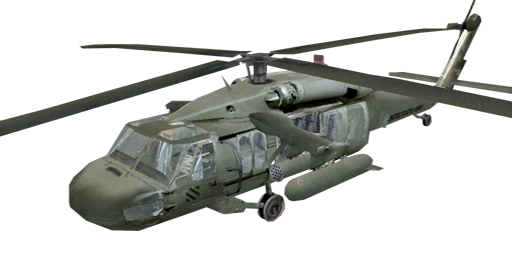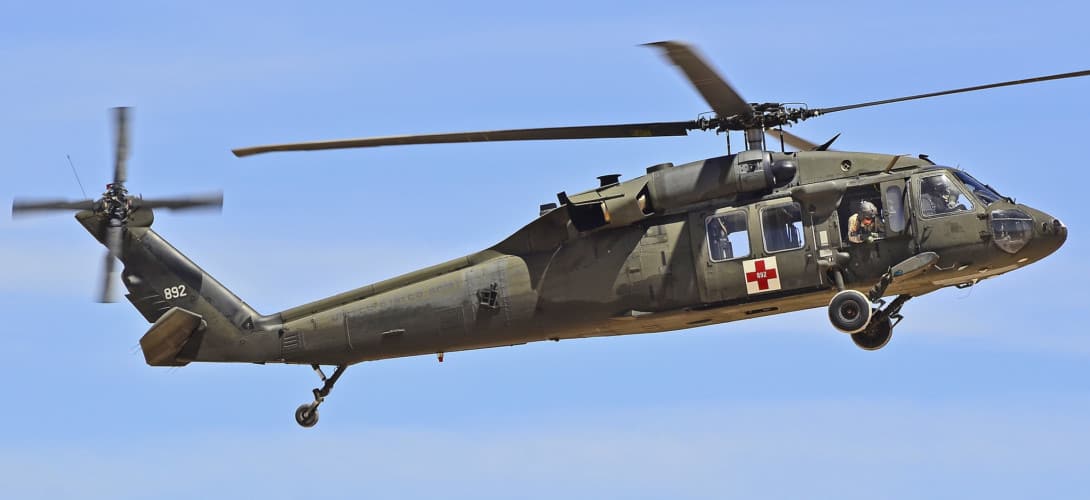Check out the Flexibility and Stamina of the UH-60 Blackhawk Helicopter
Check out the Flexibility and Stamina of the UH-60 Blackhawk Helicopter
Blog Article
Comprehensive Overview of the UH-60 Blackhawk Helicopter
The UH-60 Blackhawk helicopter, a trademark of modern-day army aeronautics, has actually played a crucial function in varied functional theaters given that its introduction in the 1980s. With its robust style and versatility, it has actually adjusted to meet different missions, from army transport to clinical discharge. As we explore its complex history, layout requirements, and technological developments, it ends up being noticeable that the Blackhawk's influence extends much past the field of battle. The full degree of its tradition and the lessons found out from its deployment throughout the world warrant a better evaluation.
History and Development
The UH-60 Blackhawk helicopter has actually consistently been a cornerstone of U.S. military air travel considering that its intro in the late 1970s. Established by Sikorsky Airplane, the Blackhawk was developed to satisfy the Army's need for a versatile utility helicopter that could carry out an array of goals in different atmospheres. UH-60 Blackhawk. The development process began in 1972, with the very first prototype flying in 1974
Its operational launching came throughout the 1980s, where it was swiftly identified for its capability, speed, and dexterity to transfer troops and freight efficiently. The Blackhawk's performance in the 1983 Grenada intrusion and subsequent operations strengthened its online reputation as a trustworthy workhorse for the U.S. Army. For many years, the helicopter has actually undertaken many upgrades and variants, adapting to developing armed forces needs, including the enhancement of innovative avionics and weapon systems.

The Blackhawk's style has actually likewise progressed to offer different branches of the army and allied pressures, showcasing its flexibility. Today, it continues to be an important part of U.S. army procedures and proceeds to be a favored selection for rotary-wing air travel across the globe, showing its enduring tradition and recurring relevance in modern war.
Layout and Specifications
Engineered for efficiency and adaptability, the UH-60 Blackhawk helicopter features a durable design that boosts its functional capabilities. The airframe is built largely from aluminum alloys, providing a balance of stamina and weight effectiveness. With a length of 64 feet and a blades size of 53 feet, the Blackhawk is developed to suit a wide variety of missions. Its optimum launch weight is approximately 22,000 extra pounds, allowing it to carry considerable hauls.
The helicopter is powered by 2 General Electric T700-GE-701C engines, each delivering 1,800 shaft horse power, which guarantees high degrees of integrity and efficiency in varied settings. The blades system is a four-blade, fully articulated design that enables for superb ability to move and security, also in negative conditions.
Furthermore, the UH-60 includes advanced avionics and flight control systems that enhance situational awareness and pilot control. The cabin is designed for fast reconfiguration, permitting it to sustain different mission profiles, from army transport to clinical emptying. In general, the style and specs of the UH-60 Blackhawk demonstrate a commitment to functional quality and flexibility in the area.

Objectives and duties
With its durable layout and advanced capabilities, the UH-60 Blackhawk helicopter serves a multitude of roles across various armed forces operations. Initially created for army transport, the Blackhawk has advanced to perform a vast range of objectives, consisting of clinical evacuation, search and rescue, and logistical support. Its convenience allows it to operate in varied settings, from urban landscapes to tough surfaces.
In fight situations, the Blackhawk is essential for putting and drawing out special procedures forces, offering them with the mobility find out required to perform their missions effectively. Additionally, the helicopter can be furnished with innovative communication and avionics systems, enhancing its function as a command and control platform in dynamic battle circumstances.

Technical Innovations
Integrating cutting-edge technologies has dramatically enhanced the performance and capabilities of the UH-60 Blackhawk helicopter. The unification of advanced avionics systems, consisting of digital trip control and enhanced situational awareness displays, has actually improved pilot navigating and decision-making in complicated environments. These systems make it possible for real-time data processing, promoting much better interaction and control during missions.
Moreover, the Blackhawk's airframe has actually undertaken significant upgrades, making use of composite products that reduce weight while enhancing structural stability. This alteration adds to improved gas effectiveness and functional array. The helicopter is also furnished with innovative propulsion systems that provide better power and reliability, making sure ideal performance in varied problems.
Additionally, the combination of modern sensors and tool systems has broadened the Blackhawk's versatility. Improved targeting abilities and advanced danger detection systems permit reliable involvement in battle circumstances, boosting objective success rates.
Global Effect and Tradition
The UH-60 Blackhawk helicopter has actually made a profound influence on armed forces operations and humanitarian efforts worldwide because its introduction in the late 1970s. Its adaptability and progressed modern technology have enabled it to serve in numerous duties, consisting of army transport, clinical discharge, and logistical support (UH-60 Blackhawk). The helicopter's performance in fight circumstances has redefined airborne wheelchair, permitting pressures to respond promptly and effectively site web to vibrant field of battle problems
Around The World, the Blackhawk has been released in many conflicts, from the Persian Gulf to the Balkans, showcasing its flexibility to diverse environments. Its duty in altruistic objectives, such as disaster alleviation and search-and-rescue procedures, has further strengthened its online reputation as a trusted property in crisis situations.
The tradition of the UH-60 prolongs beyond its army applications; it has actually likewise affected helicopter layout and operational teaching worldwide. Its success has actually prompted various other nations to develop similar aircraft, boosting global air travel requirements and operational capacities. As the Blackhawk remains to develop with modern upgrades, its effect on both noncombatant and armed forces aeronautics remains substantial, ensuring its location in history as one of the most legendary helicopters of its time.
Verdict
The UH-60 Blackhawk helicopter stands as a testament to innovative design and functional army application. Its layout and abilities have considerably designed contemporary aerial procedures, improving troop mobility and operational efficiency. The recurring improvements in modern technology remain to strengthen the Blackhawk's function in modern war and altruistic efforts. Consequently, the Blackhawk has left an indelible mark on army aeronautics, influencing future helicopter styles and redefining tactical techniques around the world.
The UH-60 Blackhawk helicopter, a hallmark of contemporary army aviation, has played an indispensable duty in diverse operational theaters because its intro in the 1980s - UH-60 Blackhawk.The UH-60 Blackhawk helicopter has actually regularly been a cornerstone of United state army air travel given that its intro in the late 1970s.Engineered for performance and flexibility, the UH-60 Blackhawk helicopter features a durable style that enhances its functional capabilities.With its robust design and advanced capabilities, the UH-60 Blackhawk helicopter serves a wide this content range of functions throughout numerous armed forces operations.The UH-60 Blackhawk helicopter has actually made an extensive influence on humanitarian efforts and military operations worldwide since its intro in the late 1970s
Report this page